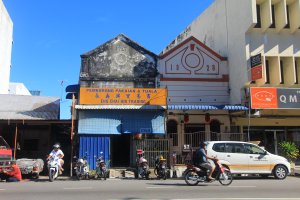Godowns are warehouses used for storage of goods. They derived the name "godown" from the Malay word "gudang".
Godowns are a common feature in the buildings of George Town going back to the early 19th century and possibly even earlier. The earliest godowns were built of wood with attap roofing, often of Anglo-Indian architecture. As these catch fire easily, over time, the wooden godowns were replaced by brick ones.
One of the earliest godowns in George Town, and indeed one of the earliest non-administrative buildings in the city, is Gudang Acheh, which has appeared in the map of 1803, meaning it has been around by then. This building has played many different functions, including one as a gaol, a fact that has not escaped notice - the Escape Sculpture celebrates this particular matter.
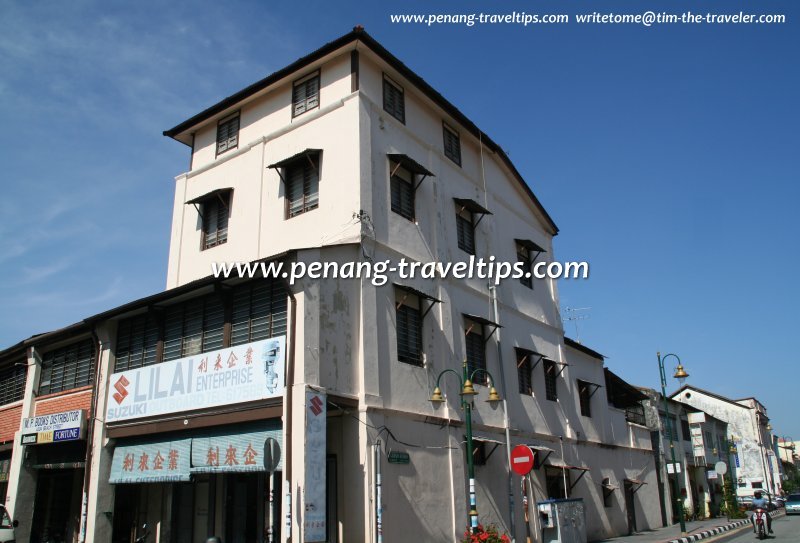 A former Acheenese warehouse from the early 19th century (8 January 2008)
A former Acheenese warehouse from the early 19th century (8 January 2008)
Many of the godowns in George Town were built between the 1880s and 1930, when George Town experienced one of its fastest growth since its founding in 1786. It was also a time when the Penang Harbour bustled with activity, being the main port for the export of regional material - vast amount of tin and later rubber, not only from the Malayan mainland, but also from Sumatra and southern Thailand. That period coincided with the introduction of steam ship to replace sailing ship. The new vessels required deeper wharves. The importation of manufactured goods from Europe, particularly Great Britain, necessitated the construction of godowns.
Even in late 19th century, George Town experience a scarcity of land for construction. This, along with the need for deeper wharves, provided the impetus for large-scale land reclamation, which pushed the shoreline outward, creating new land for the construction of godowns between the existing Beach Street and the newly laid Weld Quay. Streets extending through this area have "ghaut" attached to their names, as a reminder of the stone steps that once led down to waters edge, from the streets that they are known.
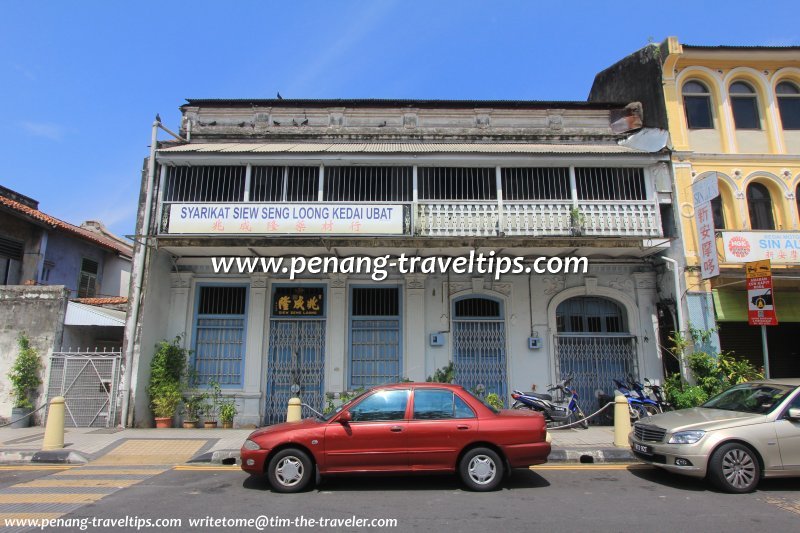 35 Pitt Street, now the Siew Seng Loong Medical Hall, is an example of the early 20th century godown of George Town (22 July 2012)
35 Pitt Street, now the Siew Seng Loong Medical Hall, is an example of the early 20th century godown of George Town (22 July 2012)
Godowns come in various shapes and sizes. Their architectural styles are equally disparate. Those built by the British borrow heavily from Anglo-Indian construction styles learned in India, whereas the Chinese brought Far East influence to their design, while the Malays similarly added their own elements.
By their location, we can easily tell which godown belonged to whom. Those owned by the European trading firms occupy the reclaimed land between Bishop Street Ghaut and China Street Ghaut, while those owned by the Chinese, Indians and Malays from China Street Ghaut to Prangin Road Ghaut. Many of these godowns doubled as shophouses, with the storefront facing the street while the warehousing are done deep inside.
Goods were transported from the bumboats to bullock carts and directly to the backdoor of the godowns while wholesale activity were carried out at the storefront. Some of the shophouses along Beach Street have hooks hanging down from the ceiling of their five-foot ways (take note of these if you are walking there). These are for the scales used to weigh goods.
 1920s godown with jack-roof next to George Town Chambers, China Street Ghaut, George Town (25 July 2012)
1920s godown with jack-roof next to George Town Chambers, China Street Ghaut, George Town (25 July 2012)
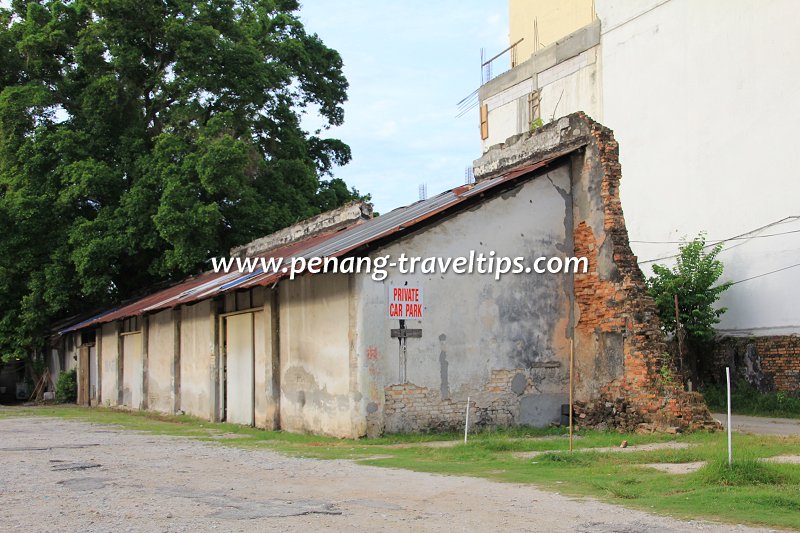 Remains of a godown off Victoria Street, George Town (11 May 2013)
Remains of a godown off Victoria Street, George Town (11 May 2013)
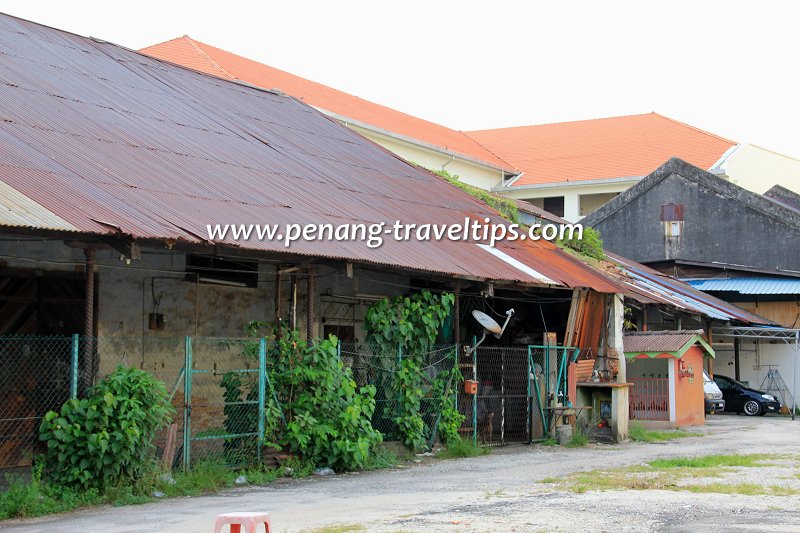 Godown converted into a home (11 May 2013)
Godown converted into a home (11 May 2013)
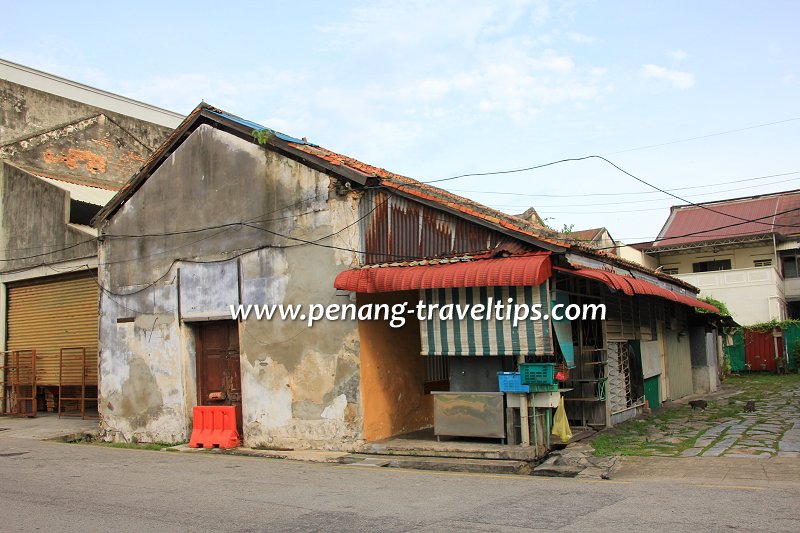 Another converted godown (11 May 2013)
Another converted godown (11 May 2013)
Weld Quay Historic Godowns
DetailsArchitectural Styles of Buildings in George Town

Copyright © 2003-2025 Timothy Tye. All Rights Reserved.

 Go Back
Go Back